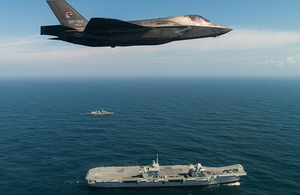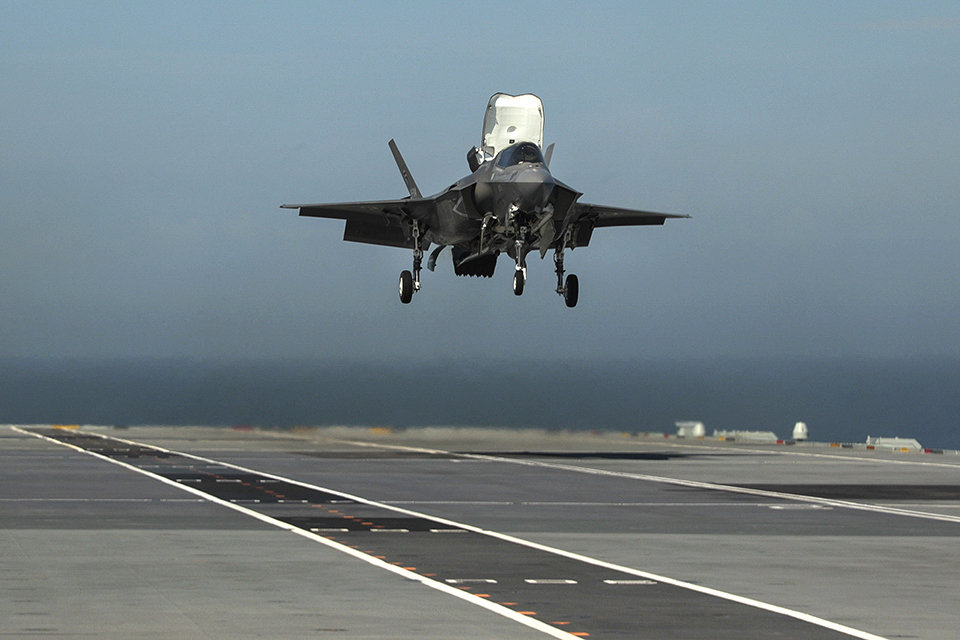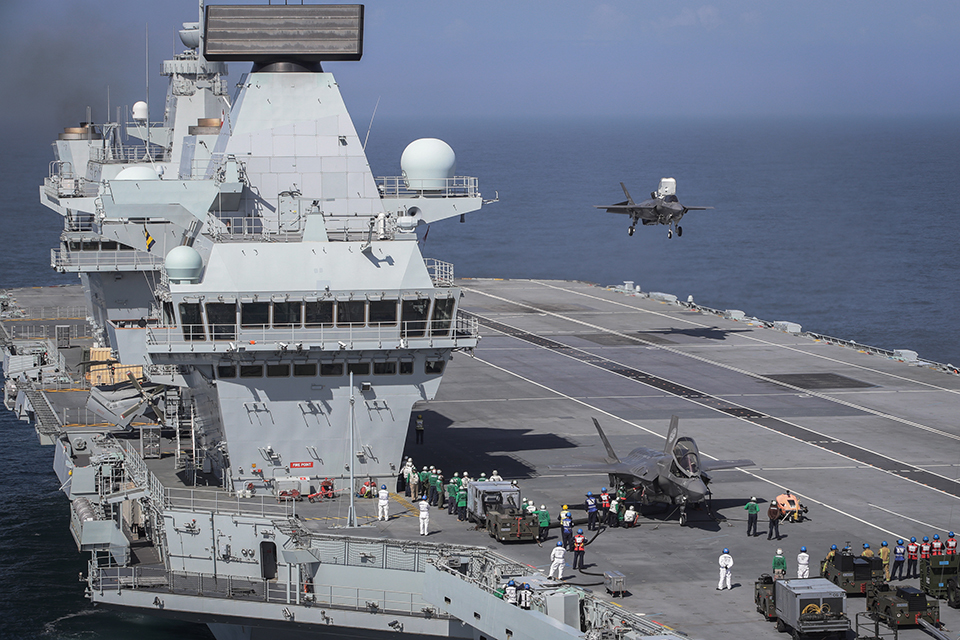Fighter jets join forces with British aircraft carrier to make history
The first F-35 Lightning fighter jets have landed on the deck of the United Kingdom’s new aircraft carrier, making history and marking the beginning of more than half-a-century of ‘Carrier Strike’ operations.

Fighter jets join forces with British aircraft carrier to make history
Royal Navy Commander Nathan Gray and RAF Squadron Leader Andy Edgell were the first pilots to land their stealth F-35 Lightning fighter jets on board the carrier, demonstrating the formidable force HMS Queen Elizabeth and her fleet of jets will be.
The first landings and take-offs from HMS Queen Elizabeth are the culmination of a national endeavour lasting more than a decade to bring an aircraft carrier back to the UK’s arsenal. Able to embark up to 36 of the supersonic jets, the carrier provides the Royal Navy with a capability possessed by few others.
Defence Secretary Gavin Williamson said:
The largest warship in British history is joining forces with the most advanced fighter jets on the planet. This marks a rebirth of our power to strike decisively from the seas anywhere in the world.
The historic first landing on the deck of HMS Queen Elizabeth is a monumental moment in our country’s proud military history. It is also a statement of Britain’s determination to promote peace and prevent war.

Fighter jets join forces with British aircraft carrier to make history
The landings mark the start of more than 500 take-offs and touch-downs set to take place from the mammoth warship during the next 11-weeks, with the jets being put through their paces in a range of weather conditions.
The return of ‘Carrier Strike’ to the UK comes eight years after a fighter jet last landed on a British carrier.
Commanding Officer, Capt Jerry Kyd, who was also the captain of HMS Ark Royal when the last Harrier took off from a carrier, said:
I am quite emotional to be here in HMS Queen Elizabeth seeing the return of fixed wing aviation, having been the captain of the aircraft carrier which launched the last Harrier at sea nearly eight years ago.
The regeneration of big deck carriers able to operate globally, as we are proving here on this deployment, is a major step forward for the United Kingdom’s defence and our ability to match the increasing pace of our adversaries. The first touch-downs of these impressive stealth jets shows how the United Kingdom will continue to be world leaders at sea for generations to come.

Fighter jets join forces with British aircraft carrier to make history
Commander UK Carrier Strike Group, Cdre Andrew Betton added:
The Queen Elizabeth Class carriers have been specifically designed and built to operate the F-35 Lightning, offering an immensely flexible and potent combination to deliver military effect around the world. Conducting these trials is a critical and exciting step on this journey and I applaud the many thousands of civilian and military personnel who have played a part in bringing the strategic ambition to reality.
While the HMS Queen Elizabeth Class carriers will be able to project British military power across the globe for the next half-century, they can also provide humanitarian relief, deepen defence relationships with key allies and provide critical support to our forces as they are deployed across the world.
In recent operations, US aircraft carriers like the USS George HW Bush and USS Harry S. Truman have played a central role in the Gulf and the Mediterranean, conducting strikes against Daesh in Iraq and Syria.
This week’s historic flight trials come more than 100 years after the UK’s HMS Argus became the world’s first carrier capable of safely launching and recovering naval aircraft.
The ship will go on to continue her programme off the US east coast. The flight trials are expected to take around 11 weeks, during which time the ship is also expected to call into New York.
HMS Queen Elizabeth remains set to be deployed on global operations from 2021. Britain now has sixteen of a planned 138 F-35 Lightning jets as part of its world-leading fleet of military aircraft.

Fighter jets join forces with British aircraft carrier to make history